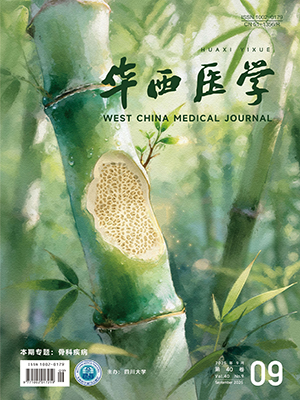摘要:目的:探讨创伤性感染性假性股动脉瘤的诊断和外科治疗的临床经验。方法:回顾性分析21例创伤性感染性假性股动脉瘤的临床资料,均行瘤体摘除及彻底的清创后,分别采用了血管结扎术和血管修复重建术两种不同的手术治疗方法。结果:血管修复重建术组中3例术后出现血管破裂大出血,要再次手术,15例行股动脉结扎术,全部保肢成功。结论:瘤体切除加血管移植术是一种理想的方法,但在无条件行血管移植时,股动脉结扎术可做为一种有效的方案,对伴有皮肤缺损者行对侧胸脐皮瓣转移术。
Abstract: Objective: 〖WT5”BZ〗To explore the traumatic infected femoral pseudoaneurysm diagnosis and surgical treatment of clinical experience. Methods: Retrospective analysis of 21 cases of traumatic infected femoral pseudoaneurysm of the clinical data were performed and the tumor removed after thorough debridement, respectively vascular ligation and blood vessel repair and reconstruction surgery of two different surgical treatment. Results: The blood vessel repair and reconstruction surgery group, three cases of postoperative bleeding blood vessel ruptures occurred, we must resurgery, 15 routine femoral artery ligation, all of the success of limb salvage. Conclusion: The tumor resection plus vascular graft is an ideal way, but in an unconditional line of vascular grafts, the femoral artery ligation can be used as an effective program for skin defects associated with the contralateral breast underwent umbilical flap transfer of patients.
Citation: CAI Wen,DU Zhao,WANG Yong.. Wound infectiousness pseudo femoral artery lump treatment experience. West China Medical Journal, 2009, 24(12): 3128-3130. doi: Copy
Copyright © the editorial department of West China Medical Journal of West China Medical Publisher. All rights reserved




